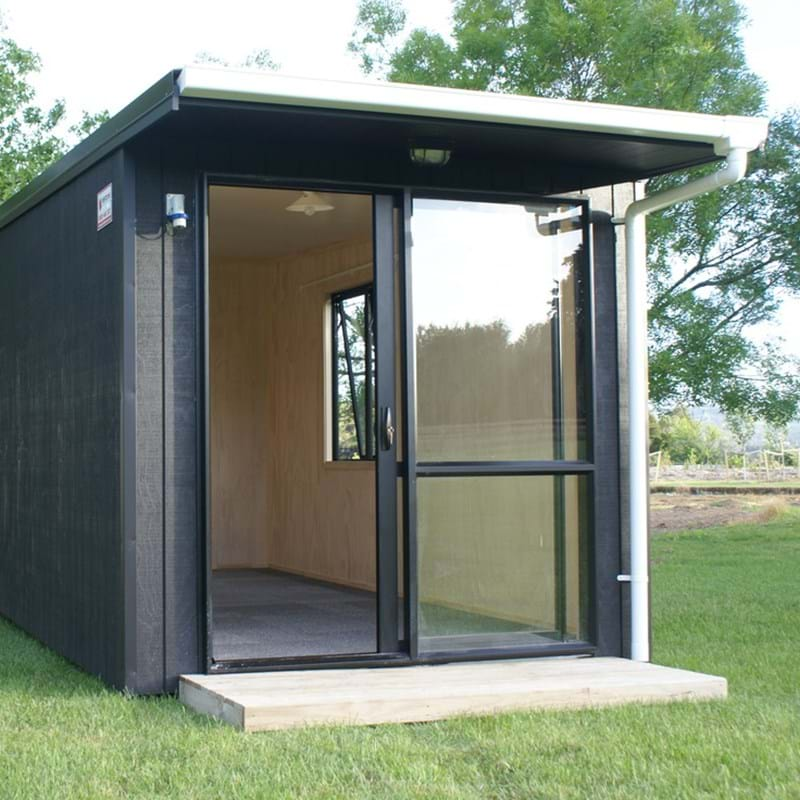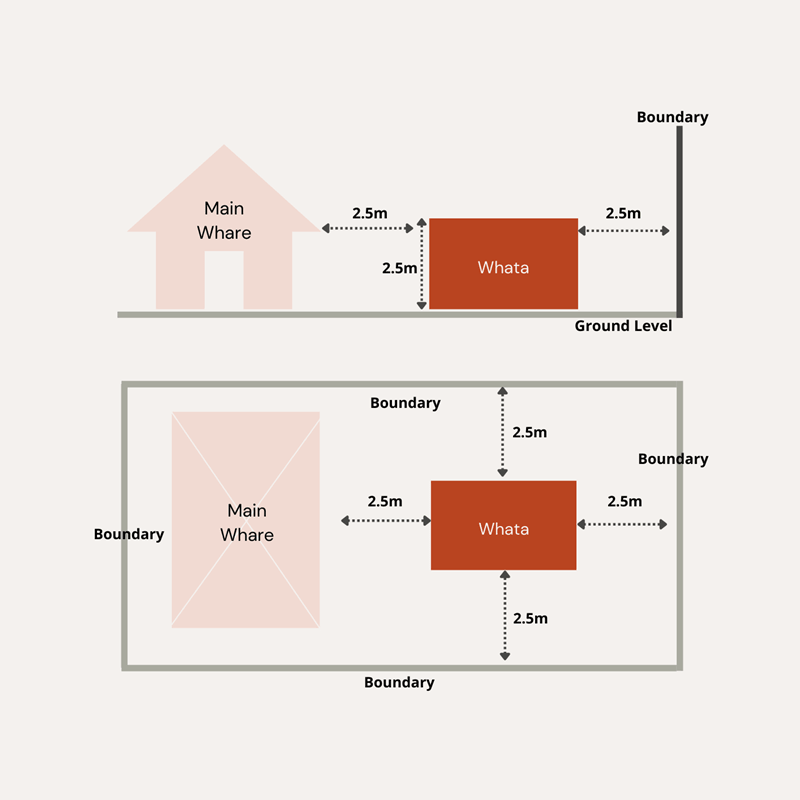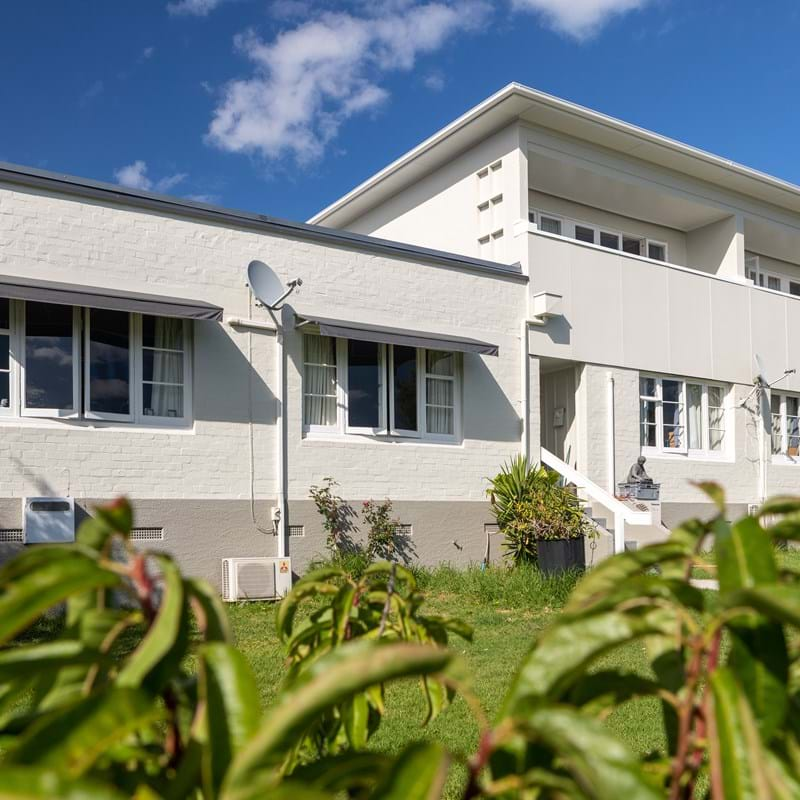Whānau Whata

We know that with a strong demand for housing and people working from home, some of our whānau have opted to put a whata on their rental properties or homes managed by Ngāti Whātua Ōrākei. To ensure our whānau are safe, we've introduced a new policy based on Auckland Council regulations.
What is considered a whata?
When we refer to whata, we are talking about a structure that does not require a building consent, also known as an “exempt structure”. Regardless of whether a building consent is required, structures must still comply with the Building Code and other relevant legislation. It ensures that the structure is safe, durable and doesn't endanger the health and safety of anyone using it.

Applying to put a whata up
Before a whata is put up on a property managed by Ngāti Whātua Ōrākei, you must:
- Complete the online application form or download an application form (pdf) and email it to [email protected].
- Show that the whata will be located in a position so that the distance between the whata and any existing structure on the land (such as the main whare, garage, tool shed) and each boundary of the land is equal to or greater than the height of the whata. (See left)
- Provide info that shows the whata meets structural requirements. (See below)
Please note if you are in a rental property managed by Ngāti Whātua Ōrākei Whai Māia, you must seek approval from the Tenancy Manager prior to completing the steps above.
Structural Requirements
Single-storey whata not exceeding 10 meters squared in floor area.
- Is not more than 1 storey high (being a height of up to 3.5 meters above the ground floor level); and
- Does not exceed 10 meters square in floor area; and
- Does not contain sanitary facilities or facilities for the storage of potable water; and
- Does not include sleeping accommodation unless the structure is used in connection with the main whare and does not contain any cooking facilities.
- If it includes sleeping accommodation, has smoke alarms installed
Single-Storey whata that has a floor area of more than 10 meters squared but less than 20 meters squared and is constructed of light weight material.
- Is not more than 1 storey high (being a height of up to 3.5 meters above the ground floor level); and
- Exceeds 10 meters squared but is less than 20 meters squared in floor area; and
- Is built using lightweight wall and roof materials and is constructed in accordance with the building performance standards known as “Acceptable Solutions B1/AS1”; and
- Does not contain sanitary facilities or facilities for the storage of potable water; and
- Does not include sleeping accommodation unless the building is used in connection with the main whare and does not contain any cooking facilities; or
- If it includes sleeping accommodation, has smoke alarms installed.

Safety review
Once you have received permission and erected your whata, you must provide confirmation from an independent building consultant (approved by Whai Rawa) that the structure complies with all regulatory requirements.
You must also undertake an annual review of the condition of the whata from an independent building consultant and complete any work that they recommend.
Insurance
You must have insurance for your whata that includes third party liability cover. If in the unlikely event, the whata causes damage to the main whare or neighbouring properties, costs to repair and/or replace will be covered.
Naming entities on insurance
- If you are renting a whare from Whai Māia you need to name Ngāti Whātua Ōrākei Whai Rawa and Ngāti Whātua Ōrākei Whai Māia on the insurance.
- If you are living in upper Kitemoana St, Reihana and Watene Streets you need to name Ngāti Whātua Ōrākei Whai Rawa on the insurance.
- If you are living in lower Kitemoana St and Ngā Oho St and/or have a License to Occupy you need to name Ngāti Whātua Ōrākei Trust on the insurance.
If you need assistance with getting insurance, please let us know and we can put you in touch with an insurance broker to ensure you get the correct cover.
Having more than one whata
Our policy only allows for one whata per property. However, you may apply in writing to Whai Rawa if you require more than one whata.
Non-compliance
If your whata becomes non-compliant (with regards to our policy or regulatory requirements) at any time, then Whai Rawa will give you a reasonable amount of time to either bring the whata up to standard or remove the whata. If the whata is not removed within the set time, then Whai Rawa will remove at the cost of the whānau.
Responsibility
The whata is your responsibility and you will need to cover the cost of maintenance and repair. You must sign an acknowledgement that Whai Rawa does not own the whata and is therefore not liable to maintain or repair the whata. You must also acknowledge that no rent is payable to a Ngāti Whātua Ōrākei entity for the whata.
FAQ
The rules (particularly regarding the distance between structures) are based on health and safety considerations. The prescribed distances between a temporary structure and a permanent structure are set to significantly reduce the likelihood of fire in one structure spreading to the other. The cabin owner/seller should know to place it in the right place as these rules are set out in the Council regulations.
If you're renting the whata, it's just a matter of ringing the person that hired the cabin to you and ask the cabin owner to relocate as currently the location is a health and safety issue.
If you own the whata outright, you will need to use the same method for installing it to relocate it.
You will need to provide a copy of the insurance certificate. It must include third party liability and must list Whai Rawa as an interested party.
If you own the whata then it's a good idea to insure it to cover the cost of replacement. In addition, we require you to have third party liability so that if something was to occur that damages the main whare, you are covered.
It's similar to a car's WOF. It's to ensure that the whata is safe to live in and structurally sound.
{{title}}
{{descript}}
